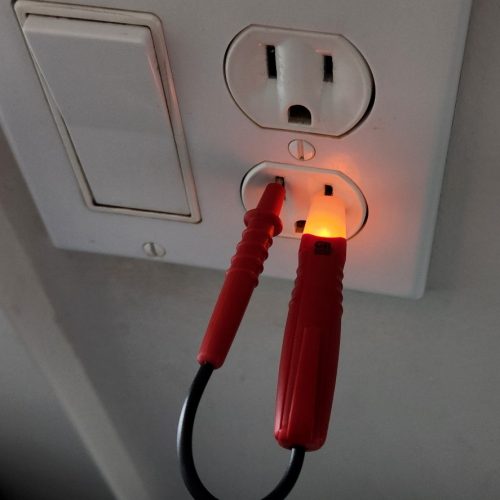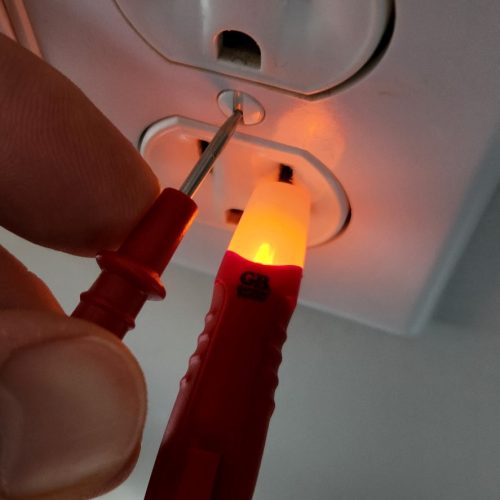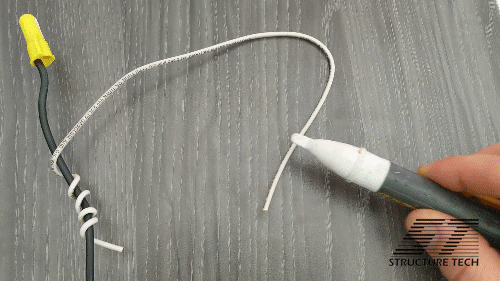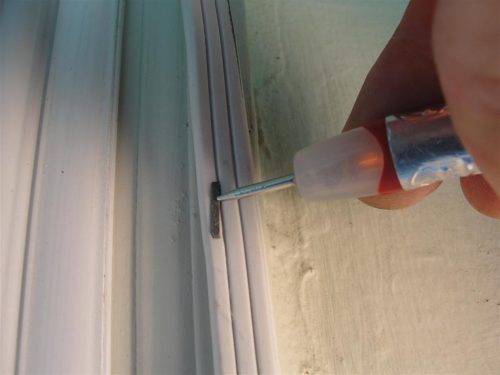Every home inspector ought to carry around a two-lead electrical tester. For last week’s blog post, I shared the list of home inspection tools that home inspectors at Structure Tech use. One of those items was a two-lead electrical tester, and today I’m going to share how I use mine.
What a two-lead tester does
A two-lead electrical tester is a contact tester that confirms you have voltage. You touch one lead to a hot (ungrounded) conductor and the other lead to a neutral wire, and it’ll light up.
You can also test between the hot and ground slot, or even a grounded surface, such as the cover plate screw going into the outlet.
It doesn’t take batteries, costs about $5, and takes up very little room in a tool pouch or pocket.
How I use a two-lead tester
The most obvious use for a two-lead tester is for testing old two-prong outlets. You stick one lead in each slot, and the tester lights up if the outlet is wired properly. Then to verify proper polarity, I’ll stick one lead in the smaller slot, and the other lead to a grounded surface. Because the smaller slot is supposed to be the hot one, the tester should light up. If the larger slot is hot, the polarity is reversed, increasing the potential for an electric shock.
What if there’s no grounded surface nearby? Shhh… don’t tell anyone this, but I get around this by touching my finger to the other lead on the two-prong tester. My body has enough capacitance to light up the tester… just a little. This doesn’t work in very bright rooms or in sunlight, but it does work, provided you’re using a tester with a neon bulb. If you try with trick with any other tester, you’ll get a noticeable shock. And you might even electrocute yourself, so do this at your own risk.
I also use a two-lead tester to verify something is energized. While some believe that a non-contact voltage detector will reliably detect voltage, it’ll also give false positives.
If you want to know if something is energized, a two-lead tester is a good tool to use. The photo below shows a good example of this.
Someone drove a staple through this extension cord, running right up the side of the front door. While I could simply write this up and move on, I’d prefer to know if this is really an immediate shock hazard or not. A non-contact tester (voltage sniffer) can’t get this accurate, but a two-lead tester can. As you can see from the light on my tester, this was indeed a hot staple.
Sometimes, I’ll use this tester to verify a surface is grounded too, mostly out of curiosity.
Summary
A volt-ohm meter will give much more information than a simple two-lead tester, but they take up much more room, are clumsier to use, and take batteries. My favorite two-lead tester is the GB GET-3100 tester, which currently sells for $5 at Home Depot and Amazon. It also uses a neon bulb, which makes it more versatile.





Harry Janssen
December 6, 2022, 8:39 pm
Rueben, I agree that is a valuable tool every inspector should have.